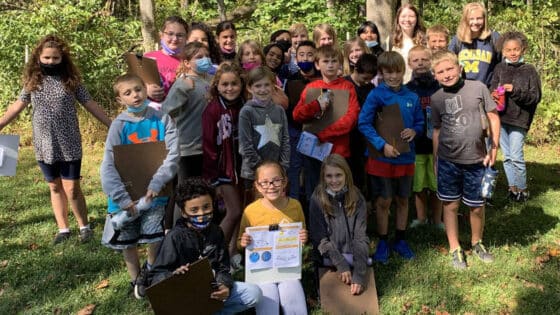Kerlin, S. 2009. The Pennsylvania State University, University Park, Pennsylvania.
Abstract
The physical walls of a classroom have typically acted as the boundary of school science learning communities. The participants in these learning communities are the students and the teacher in individual classrooms. These participants contribute to scientific discourse about a specific content area under study. Scientific learning communities, on the other hand, long ago moved beyond the confines of a laboratory, meeting room or any one physical location. Scientists engage in ongoing discourse with many members of the scientific community in different locations all over the world. These same technological advances can now be used by science teachers and students to venture out of their classroom and become involved in a global learning community (GLC).
The context of this study, From Local to Extreme Environments (FLEXE), is a science curriculum that attempts to expand the boundaries of the science classroom and involve students in a GLC. FLEXE participants are not limited to conversations with students and a teacher in one classroom. Students and teachers in many classrooms in multiple countries, deep-sea scientists, and university education researchers are involved in the FLEXE community.
This study was framed by theories of sociocultural learning, discourse and learning communities. These theoretical research perspectives acted as lenses for the examination of communication of student participants in a GLC. Student views of their collaboration and their scientific writing were studied within a principle contrast of U.S. students in domestic or international class partnerships. A mixed methods approach was used to study the GLC established in the FLEXE program. Statistical analyses were used with “quick questions” (QQs) that follow each online session, in order to characterize students’ views of the online global learning environment. Argumentation analysis was used to examine and compare how students supported their scientific claims with a number of different data sources. Classroom visits and communication with teachers throughout the unit helped to characterize the enactment of the instructional unit.
Trends in the findings of the analyses all point to favorable results for international class partnerships over domestic U.S. partnerships. U.S. students in international partnerships were more excited about their partnership and wrote more accurate scientific claims that they supported with more evidence. These students specifically included more uses of the evidentiary discourse components contrast, causality, and experience discourse components.
The findings from this study add to knowledge about learning communities, written scientific argumentation analysis, and students’ views of class partnerships. The findings also have direct implications for classroom practice. Global science education has the possibility to have bold impacts on the structure and discourse of science education. Many features of science education should now be reconsidered, including the curriculum, assessments, student discourse, and interaction with scientists. We live in a global society that includes a global economy, multicultural and multi-national relationships, and comparisons of educational achievements between countries. The next step in the progression of science education is to begin to use educational tools that expand the number and distribution of participants in school science learning communities, and to create global learning communities that are similar to science research communities.



